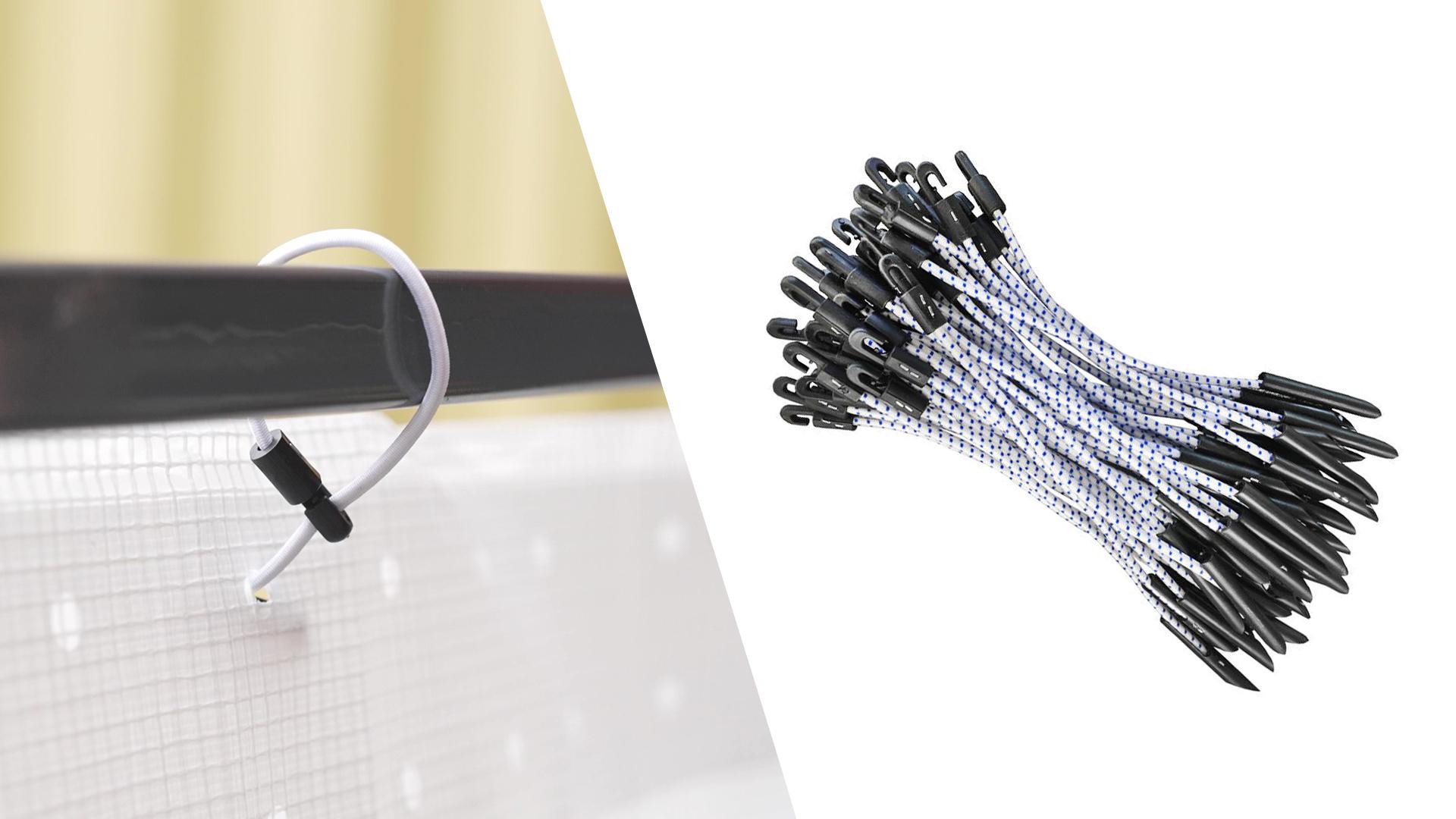Scaffold sheeting must be securely tied to prevent being blown away by strong winds. Using the right ties ensures scaffold stability and promotes construction site safety.
Why Do Ties Matter for Scaffold Sheeting?
Ties matter because they distribute the load evenly across the sheeting and the scaffold frame. This stabilise the sheeting and reduces the likelihood of it from shifting or coming loose due to wind, vibrations, or other external forces. It keeps the scaffold sheeting functional throughout the construction project.
What Are Common Ties Used?
Toggle ties and bungee ties are among the common ties used to fix scaffold sheeting.
Toggle ties
Toggle ties are mostly made of rubber or latex cord with a hook and toggle. They work by inserting the toggle through the eyelet and tightening the tie with the hook. This creates a secure anchor point to the pole and provides a secure attachment for the scaffold sheeting.

Bungee ties
Bungee ties are elastic cords with hooks on each end. They stretch to fit around the scaffold and secure the sheeting in place by hooking onto eyelets. Simply wrap the tie around the scaffold pole and hook it onto the eyelets to keep the sheeting in place.

Both serve to secure scaffolding sheets, but they differ in material, design, and installation. Please refer to your scaffold sheeting provider for the recommended tie to use.
What Happens When Scaffold Sheeting Isn’t Tied Properly?
It can lead to significant safety hazards when scaffold sheeting isn’t tied the right way. Untied sheets become vulnerable to flapping, which can obstruct workers’ vision or movement. This increases the risks of accidents such as trips, slips, or falls from height.
Unsecured sheeting can also collide with construction equipment, causing damage to machinery operations. Loss of materials or tools is also likely in the case of loose sheeting. They can be blown off scaffold platforms or scattered across the site, which can be dangerous.
Moreover, the sheets may cause physical damage if they slam into the building under construction or nearby structures. This can include damaging exterior finishes, causing scratches, dents, or punctures. Or it may interfere with equipment mounted on the exterior of the building, such as HVAC systems.
While scaffold sheeting may be lightweight, its detachment can still pose risks. Make sure to use ties properly the next time you fix scaffold sheeting on poles. With this, you can prevent accidents, protect against bad weather, and keep the construction going.
Need more advice or information? Our 5-star rated customer service is ready to help you with further queries. You can contact us via hello@s-pgroup.com or call us at +44 (028) 9442 8611 to get a quote.